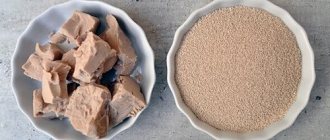A snow-white and perfect smile has always been considered one of the external manifestations of a person’s success. Modern dentistry offers a wide range of procedures that will help correct natural or acquired dental defects during life. Among the methods practiced, the installation of veneers is quite effective and quick.
This procedure allows you to get a perfect smile for several decades in just a couple of weeks. However, before choosing this technique, you need to understand what dental veneers are, when they are used and what the negative consequences of such a procedure are.
What are veneers?
Veneers are artificially created prosthetics in the form of plates that are installed on the labial side of the front teeth in order to give them the ideal shape and color. The thickness of such plates is usually in the range from 0.5 to 0.6 mm. But there are also ultra-thin prostheses called lumineers, which have a thickness of 0.2-0.3 mm.
Very often, when answering the question of what dental veneers are, they are referred to as one of the types of crowns. However, this opinion is erroneous, since these types, although often made of the same materials, perform different functions, and also have significant differences in the form and method of their installation.
Veneers, unlike crowns, are not installed on the entire tooth, but only on its front side and cutting edge. Therefore, in shape they resemble a plate that has a recess on the inside of the prosthesis, with the help of which they are fixed to the tooth.
In terms of functionality, such dentures are used mainly to give teeth a beautiful and aesthetic appearance. In rare cases, they can be used to correct minor defects.
The main advantage of veneers over crowns is that when installing them there is no need to remove the nerve and all hard tissues of the tooth. This allows you to keep the tooth in normal condition, which will significantly extend its life. With a crown, the nerve is definitely removed, and often after a few years, under the prosthesis, the tooth completely rots and is removed.
When Dental Veneers Cannot Be Installed
There are cases when adjusting the dentition with veneers is not recommended. These include:
- the presence of multiple fillings on the front teeth;
- severe destruction of the front teeth;
- incorrect bite – veneering for such a pathology can aggravate the situation;
- Bruxism is pathological grinding of teeth. In this case, the products will very quickly become unusable;
- non-compliance with hygiene rules - patients who are too lazy to properly care for their oral cavity should choose another method of dental restoration;
- removed pulp in some cases. Not so long ago, veneers were not installed on “dead” teeth, but today this is not an absolute contraindication.
But on the other hand, under certain defects and circumstances, veneering is the optimal way to correct teeth.
Types of veneers, their characteristics, advantages and disadvantages
The service life of veneers and their characteristics greatly depend on the material from which they are made. Dentures of this type can be made from ceramic or composite.
Ceramic veneers
The main material in production is ceramics, which allows you to get a strong and reliable denture that completely imitates the color of neighboring teeth.
It is important to note that manufacturing work is usually carried out in specialized laboratories, in which dental technicians and orthopedic dentists create a future veneer based on an impression.
The advantages of this type of prosthetics include:
- Almost 100% color identical to your own teeth.
- High levels of hardness and mechanical stability of the cutting edge.
- Stable color throughout the entire service life.
- The long service life of veneers, which with proper care is 10 years or more.
The disadvantages of this type of prosthesis include a higher cost compared to other types and a long manufacturing and installation time.
In the production of ceramic veneers, mainly two types of materials are used - porcelain and zirconium dioxide.
Porcelain veneers
Porcelain veneers are the most common, since this material is almost completely identical in structure to tooth enamel and has similar mechanical strength. Porcelain veneers are made in two different ways - layering and pressing.
The first production method is based on constructing a denture in separate layers. After each layer is applied, it is fired. This technique allows you to obtain a 100% match of the color and shade of the veneer with the original.
The second method involves creating a prosthesis from a single piece by pressing the material. For veneers made in this way, the mechanical hardness index is higher than for those made using layer-by-layer construction, since pressing is due to high division and temperature. However, such prostheses have minor deviations in color .
Zirconium dioxide veneers
This type of denture consists of a zirconium frame covered with a porcelain shell. To make a ceramic plate, an accurate impression of the tooth is required, which is taken using special equipment. The obtained parameters are transferred to an ultra-precise milling machine, which grinds the future veneer from the workpiece.
Zirconium prostheses rank first among other types in terms of strength. The service life of veneers of this type is 15 years or more. The disadvantages of this type of dental plates include a small range of color options and high cost.
Composite dentures
Composite veneers are a cheap substitute for ceramic dentures. They are made from filling material. According to the production technology, they are identical to layer-by-layer ceramic veneers.
However, dentists often make them directly in the patient’s mouth in order to save time, which leads to a deterioration in their quality.
Among the advantages of this technology are the speed of production of prostheses and their low cost. But there are also disadvantages:
- Low mechanical strength of the dental plate, which deteriorates significantly during its service life.
- Low color identity to the patient’s natural teeth.
- Darkening and tarnishing of the dental plate 1-2 years after installation. This leads to the fact that the patient needs to visit the dentist annually to have them whitened.
- Short service life, about 4 years.
Lumineers
This is the newest type of microprosthesis, which is considered the best veneers today. They are plates made of super-hard ceramic material, 0.2 mm thick. Their main advantage is that there is no need to grind down the hard layers of the tooth during installation.
Such dentures can be placed directly on tooth enamel using a special adhesive composition, which ensures reliable fastening for 20 years. In addition, lumineers have all the advantages of ceramic microprostheses. The service life of veneers of this type is at least 15-20 years.
The main and only disadvantage of lumineers is their high price, which is 2-3 times higher than the cost of conventional ceramic types.
Types of veneers
Overlays are available to choose from. They are made from special materials that do not cause an allergic reaction, are resistant to various negative influences and do not emit toxic substances hazardous to human health. There are ceramic plates, microprostheses made of reflective composites and lumineers. The onlays differ in thickness: if microprostheses made of composites/ceramics have a thickness of 0.5 - 0.6 mm, then lumineers are 0.3 mm. Due to the fact that lumineers are ultra-thin, there is no need to grind down the enamel before installing them.
Ceramic veneers
Medical porcelain and zirconium dioxide can be used to make these onlays. Microprostheses are characterized by increased reliability and resistance to various impacts. They do not darken over time and do not differ in appearance from real teeth. Ceramic veneers have a thickness of 0.3 – 0.5 millimeters. Their shade is selected individually. Subtypes of microprostheses:
- Lumineers are dental plates made of special ceramics with a thickness of 0.2–0.3 millimeters that do not require preparation (pre-grinding of the enamel before installation). This technology is as gentle as possible.
- Porcelain are microprostheses made of ceramics, characterized by increased aesthetics and reliability. They do not fade, do not stain, resemble the enamel of a healthy dentition in appearance, and are distinguished by the complexity of the installation process (only if you strictly follow the procedure for performing the procedure, you can achieve a high-quality result).
- Zirconium ones are the most expensive microprostheses. They are absolutely biocompatible with human tissues, so they do not cause allergies. The onlays are formed on a zirconium frame, on top of which ceramic is applied. They are characterized by high strength, comparable to metal, resistance to temperature changes, have a longer service life than porcelain, but require significant grinding of the enamel.
The following technologies are used for the manufacture of ceramic microprostheses:
- milling (the veneer is cut and turned from a single piece of material);
- layer-by-layer followed by firing (microprostheses on a refractor are baked at high temperature);
- injection molding - using pressing under high pressure (the linings are more durable).
The main advantages of ceramic microprostheses:
- highest aesthetics;
- resistance to low and high temperatures;
- the ability to choose a shade identical to the natural color;
- complete color stability;
- long service life.
The disadvantages of ceramic microprostheses include their excessive fragility. Sometimes the plates break, in which case you have to make and install them again. If the veneer comes off, the dentist will reattach it. Patients with veneers need to carefully monitor not only their oral hygiene, but also the load they place on their teeth. It is not allowed to bite hard foods such as nuts, apples, caramel - this may cause the plates to move or break.
Articles on the topic
- Dental treatment during pregnancy - when and how it is safer to do it, contraindications and restrictions
- Champix - instructions for use, mechanism of action, contraindications, side effects and analogues
- Omnik - instructions and mechanism of action, contraindications, side effects, dosage regimen and analogues
Composite
These dental veneers are made from materials that are similar in composition to fillings. They are used for the restoration of one or several teeth, since they do not differ in aesthetics, strength and reliability. A dental therapist can make composite microprostheses directly in the patient’s mouth, this helps to significantly reduce the installation time of onlays. Another advantage of microprostheses made of composite is a gentle method of treating the surface of a healthy tooth. To place veneers, there is no need to excessively grind the surface.
Composite microprostheses have many disadvantages. They quickly darken, fade, become stained with pigments, are extremely fragile, and cannot withstand strong mechanical stress. Other cons:
- quality and results largely depend on the competence and professionalism of the dentist;
- excessive abrasion, which causes a short service life of the plates (over time, chips and cracks appear along the edges);
- If installed unprofessionally, the risk of developing dental diseases increases.
Indications for use
Dentists recommend installing veneers in the following cases:
- The presence of minor deformations or natural flaws in the shape of the tooth.
- Changes in the color of tooth enamel that cannot be removed by other dental methods.
- Damage to the cutting edge of a tooth due to mechanical damage.
- Elimination of minor gaps between the front teeth.
- Giving an even look to slightly crooked teeth in the front line, without installing braces.
Contraindications
Although installing veneers is considered the safest type of prosthetics, in some cases it is worth refraining from using them. Contraindications are:
- High degree of tooth abrasion.
- Increased chewing load on the front teeth due to the absence of chewing teeth.
- Playing sports that may result in frequent jaw injuries.
- Bruxism (night grinding of teeth)
- The presence of teeth that have undergone resorcinol-formalin treatment.
- Obvious defects in the internal part of the tooth, or previously treated with filling.
- Uncorrected malocclusion.
- Damage to teeth by caries.
- The presence of inflammatory processes on the gums and in the oral cavity.
Features of manufacturing and installation of records
Teeth veneering involves performing several stages in turn:
- Preparation . Using a scale of shades and colors, the required tone of the overlay is selected, after which the doctor proceeds to preparing the tooth, grinding off 0.5 - 1.5 mm of hard tissue from its front surface. After preparation, the tooth is covered with a temporary plastic veneer to prevent the destructive effects of the aggressive environment of the oral cavity.
- Formation of the impression and subsequent production. When choosing zirconium dioxide as the veneer material, the future onlay for the teeth is modeled on a computer based on the three-dimensional impression taken, after which the information is transferred to the automatic machine that grinds the veneer, in which the workpiece is installed. Porcelain veneers are made using precise plaster models created in a dental laboratory. On the resulting models, veneers are formed by injection molding (under the influence of high temperature and pressure, pressed ceramics are obtained) or porcelain mass is applied in layers, followed by firing (formation of unpressed ceramics). Composite veneers, made in the laboratory, are also formed from a plaster impression of a light-curing filling material.
- Fixation . The procedure is carried out using composite glue intended for these purposes.
- Installation of composite veneers in the patient's mouth . The material of the composite onlay is a light-curing polymer filling. The so-called therapeutic veneer is formed by the doctor immediately after grinding the front surface of the tooth. To do this, filling material is applied layer by layer.
You will learn other ways to correct smile line teeth in this article.
The process of making and installing veneers on the front teeth:
Installation of veneers
Before installing this type of dentures, the dentist must tell the patient the following:
- What are veneers?
- Possible material options.
- Which veneers are better?
- What risks and negative consequences may a person face in the future?
- Rules for caring for this type of prosthesis.
- How long is a veneer guaranteed to last?
If the patient fully understands what a veneer is and agrees to the procedure, the dentist performs the following step-by-step actions during installation:
- Examination and preparation of teeth on which dentures will be installed. During preparation, special attention is paid to the presence of fillings and caries. Caries must be cured and fillings replaced with new ones.
- The color and shade of the future plate is selected. The wishes of the patient and the appearance of the remaining teeth are taken into account.
- Hard tissues are removed, usually no more than 0.5 mm. enamels. However, each situation is individual and the decision is made by the dentist.
- An impression of the treated tooth is taken from which the veneer will be made.
- A temporary plate is installed on the treated tooth in order to protect hard tissues from substances getting on them and developing caries until a permanent prosthesis is made.
- Making veneer. At the initial stage, a plaster model of the tooth is made from the impression, onto which the manufactured denture is fitted.
- Installation of a microprosthesis on a prepared tooth. Initially, the plate is once again tried on the treated tooth. If there are inconsistencies, corrections are made directly on the spot.
After an exact match, the prosthesis is glued using a special glue, which has a specific color, selected so that the shade of the veneer exactly matches the ordered one.
What is tooth preparation for veneers?
“Veneers without preliminary grinding!” - this is the slogan that many dental offices and clinics attract patients with. Is this possible and what is the procedure for preparing or grinding teeth before installing veneers?
It’s worth dispelling all the myths right away: if a patient wants to get a perfectly straight set of teeth, preparation is indispensable. The fact is that when correction of teeth, their shape or position is required, it is clear that they are no longer even and snow-white. In order for the tooth to look neat after restoration using a veneer, it is necessary to sharpen it. This is especially necessary if the teeth are large or are located too crowded on the jaw.
Why do some dentists claim that it is possible to correct the dentition without grinding? Most likely, this means the installation of lumineers rather than veneers. Lumineers are the same plates as veneers, made of durable ceramic material, but their maximum thickness is 0.2 mm, while the thickness of veneers can reach 0.7 mm.
Imagine what a tooth will look like on which a ceramic or composite plate with a thickness of more than 0.5 mm has been additionally installed. It is unlikely to look natural and aesthetically pleasing. That is why the top layer of enamel is pre-ground.
Rules for caring for installed dentures
Since the installation of veneers is prosthetics, the following rules must be observed. Strictly observe personal oral hygiene: brush your teeth at least twice a day, use mouthwash and dental floss after meals. This is necessary in order to prevent the appearance of foci of caries and inflammatory processes in the mucous membrane and gums.
Avoid contact sports where the risk of jaw injury is increased. Do not try to chew hard objects (nuts, hard food, etc.) with teeth on which veneers are installed.
Avoid sudden temperature changes on the teeth. For example, do not drink coffee with ice cream or eat food from the refrigerator.
Get rid of bad habits that can damage your teeth: do not grind your teeth, do not chew pen caps, nails, pencils, etc. Visit your dentist twice a year to have your teeth examined for caries or mechanical damage.
Cost of dentures
Before you decide to install veneers, you should realize that beauty requires money. The cost of this type of prosthetics is not small and seriously depends on the material, amount of work and installation location.
Depending on the material, veneers are conventionally divided into three price categories:
- A budget option in which composite plates are installed. The cost for one is from 10 thousand rubles, plus or minus 1-2 thousand.
- The average price range, which includes the installation of a porcelain prosthesis. The price for one such microprosthesis is 20 thousand rubles.
- Veneers of the highest quality, which include zirconium and lumineers, the cost of which can exceed 50 thousand rubles per tooth.
An important role in the price is played by the condition of the oral cavity and the amount of work required to install veneers. In advanced cases, the price will increase from 30 to 40 percent. In addition, the cost of prosthetics depends on the status of the clinic; the higher the qualifications of the dentists, the more expensive their work will cost.
Why are veneers needed?
Classic veneers are overlays on the tooth surface. They are something like thin plates that imitate the front side of a tooth. The thickness of such a plate may vary depending on the individual characteristics of the patient’s dentition. Typically it ranges from 0.3 to 0.7 mm. Onlays help to easily correct not only color imperfections, but also tooth shape.
Installation of veneers is one of the types of prosthetics. But the plates differ from the crown in that they are mounted only on the vestibular side. All plates are similar in design features, and differ only in the raw materials from which they are made. The most commonly used materials are:
- ceramics;
- zirconium;
- composite
Ceramic and zirconium plates have a long service life - up to 15 years (with proper wear and proper care). Due to the optimal level of transparency, such plates create the most natural aesthetics. Such materials do not cause allergies or any unwanted reactions. But there are disadvantages in this case: the impossibility of returning to its former appearance if “dismantling” of the linings is required. In addition, they are installed only after radical grinding of the real tooth.
Speaking about plates made of composite material, it is worth noting its low price. But this is perhaps the only advantage of such overlays. Composite ones wear much worse; if worn improperly, they quickly crumble and become deformed. They are usually used as a temporary structure.
Zirconium or ceramic veneers are made to order. You won't be able to do them quickly. But the composite version can be made directly in the dentist’s chair. Regardless of the material, the condition of the veneers should be checked by a dentist once every six months.









